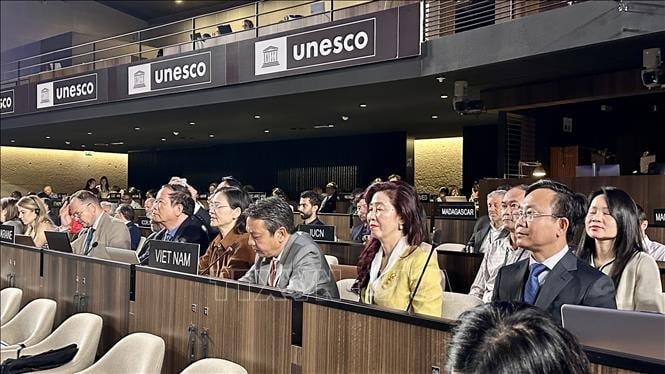
On July 13, Deputy Minister of Culture, Sports and Tourism Hoang Dao Cuong commented that the decision of the United NationsEducational , Scientific and Cultural Organization (UNESCO) to approve the adjustment of the boundary of the World Natural Heritage Phong Nha - Ke Bang National Park (Quang Tri province, Vietnam) to expand to include Hin Nam No National Park (Kham Muon province, Lao PDR) is a testament to the friendship between Vietnam and Laos.
At the 47th session of the World Heritage Committee in Paris (France), UNESCO officially approved the decision to adjust the boundary of the World Natural Heritage Phong Nha - Ke Bang National Park, including Hin Nam No National Park of Laos, creating the first transboundary world heritage named "Phong Nha - Ke Bang National Park and Hin Nam No National Park". This decision of special historical significance was approved based on 3 important criteria of UNESCO, including geology and geomorphology, ecosystem, and biodiversity.
Deputy Minister Hoang Dao Cuong assessed this as a common success of Vietnam and Laos, demonstrating the evergreen and everlasting friendship between the two countries. He said that in the coming time, the agencies of the two countries will continue to coordinate to preserve and promote the value of the transnational natural heritage between Laos and Vietnam as well as to develop the economy sustainably.
Vice Chairman of Quang Tri Province, Mr. Hoang Xuan Tan, said that Phong Nha - Ke Bang National Park has actively supported Lao friends in the process of building the dossier. He said that because Phong Nha - Ke Bang and Hin Nam No are located next to each other, the management work in the process of conservation and development of these two national parks will be carried out in the most synchronous and effective way.
Referring to important tasks in the coming time, Associate Professor, Dr. Le Thi Thu Hien, Director of the Department of Cultural Heritage, said: "To effectively manage the cross-border World Heritage between Vietnam and Lao PDR, the two sides need to continue to promote the implementation of scientific research topics and establish operational methods to deal with risks affecting the heritage."
She emphasized the need to "assess tourism capacity in accordance with the capacity and ecological resource capacity of Phong Nha - Ke Bang National Park and Hin Nam No National Park". In particular, Vietnam can support Laos to improve its capacity to develop legal regulations in managing, protecting and promoting the value of World Heritage sites.
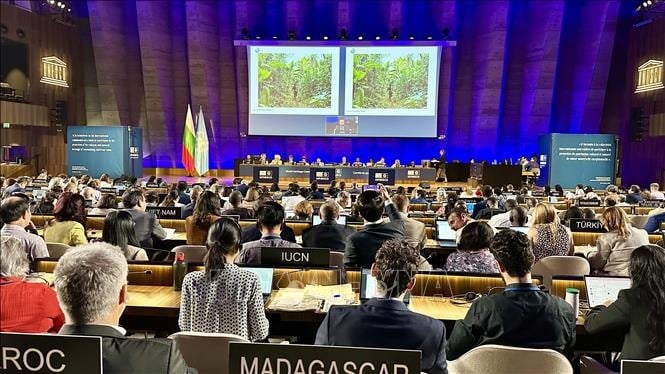
In his speech thanking the World Heritage Committee and international friends for their support, Minister of Culture and Tourism, Chairman of the National Heritage Committee of Lao PDR Suansavanh Viyaketh happily expressed: "Today marks a meaningful day and a proud moment for the Lao Government as well as the entire Lao society when Hin Nam No National Park of Lao PDR is officially listed as an extension of the World Heritage Phong Nha - Ke Bang National Park in Vietnam".
Lao Ambassador to UNESCO Kham-Inh Khitchadeth expressed his hope that this heritage will become a driving force and symbol of the relationship between Vietnam and Laos in the international arena.
With the decision of UNESCO, up to now, Vietnam has 9 World Heritages, including 2 inter-provincial World Heritages: Ha Long Bay - Cat Ba Archipelago (Quang Ninh province and Hai Phong city) and Yen Tu - Vinh Nghiem - Con Son, Kiep Bac relic and scenic complex (Quang Ninh, Bac Ninh provinces and Hai Phong city), along with the first inter-border World Heritages Phong Nha - Ke Bang National Park (Quang Tri province) and Hin Nam No National Park (Kham Muon province, Lao PDR).
The UNESCO recognition of Phong Nha - Ke Bang National Park and Hin Nam No National Park is the result of a 7-year cooperation process between the two neighboring countries. Starting from the Memorandum of Understanding signed on January 10, 2018 between the two Ministries of Culture on supporting Laos to make Hin Nam No National Park a World Natural Heritage, this process has gone through many important stages.
In 2023, the two governments agreed on the policy of building a dossier to nominate Hin Nam No National Park of Laos as a cross-border World Heritage Site with Phong Nha - Ke Bang National Park of Vietnam. On that basis, Minister of Culture, Sports and Tourism Nguyen Van Hung had direct working sessions with Lao Minister of Information, Culture and Tourism Suanesavanh Vignaket.
The Vietnam Department of Cultural Heritage directly coordinated, guided and supported the Lao Department of Cultural Heritage throughout the entire process of building the dossier, with the enthusiastic support of the People's Committee of Quang Tri province, the Department of Culture, Sports and Tourism, the Management Board of Phong Nha - Ke Bang National Park and relevant agencies.

Phong Nha - Ke Bang National Park and Hin Nam No National Park form one of the most outstanding and intact karst landscapes and ecosystems in the world. Located at the junction of the Annamese Mountains and the Central Indochina Limestone Belt, the area has a unique geological history with karst formations that developed during the Paleozoic period some 400 million years ago.
Geologically and geomorphologically, the area is the largest intact tropical wet karst system in the world. The diversity of polygonal karst features is not found anywhere else in the world. In particular, Son Doong and Xe Bang Fai caves contain the world's largest recorded cave passage in terms of diameter and continuity.
Ecologically, this is a place to protect globally significant ecosystems within the Northern Annamite Rainforest terrestrial ecoregion. The complexity and relative integrity of the limestone landscape creates many ecological niches, providing opportunities for ecological processes and species evolution.
In terms of biodiversity, the area is home to more than 2,700 vascular plant species and 800 vertebrate species recorded in Phong Nha-Ke Bang National Park. In Hin Nam No, more than 1,500 vascular plant species and 536 vertebrate species have been recorded, including the Giant Hunting Spider - the world's largest spider by leg span and endemic to Khammouane Province.
The recognition of the World Natural Heritage "Phong Nha - Ke Bang National Park and Hin Nam No National Park" by UNESCO not only has conservation significance but also opens up many opportunities for sustainable development. This will be the first model for cross-border world heritage management, helping Vietnam contribute practical experience to world heritage management according to the 1972 UNESCO Convention. Moreover, this success opens up prospects for sustainable tourism development, creating livelihoods for local communities on both sides of the border, while contributing to further tightening the friendship and solidarity between the two peoples of Vietnam and Laos.
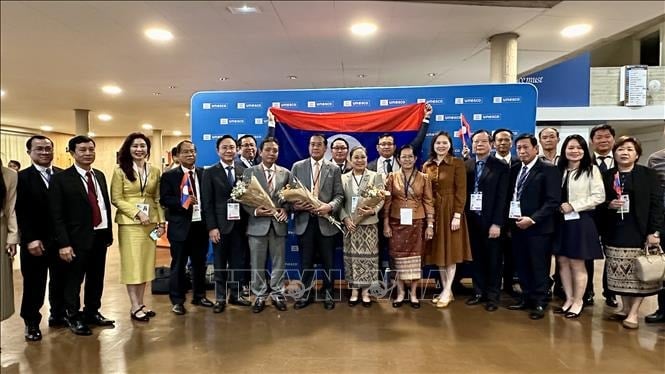
With 9 World Heritage Sites, Vietnam continues to affirm its strong commitment to protecting and promoting precious cultural and natural heritage values, while demonstrating the spirit of international cooperation in preserving the common heritage of humanity.
Source: https://baohaiphongplus.vn/di-san-the-gioi-lien-bien-gioi-dau-tien-giua-viet-nam-va-lao-416299.html









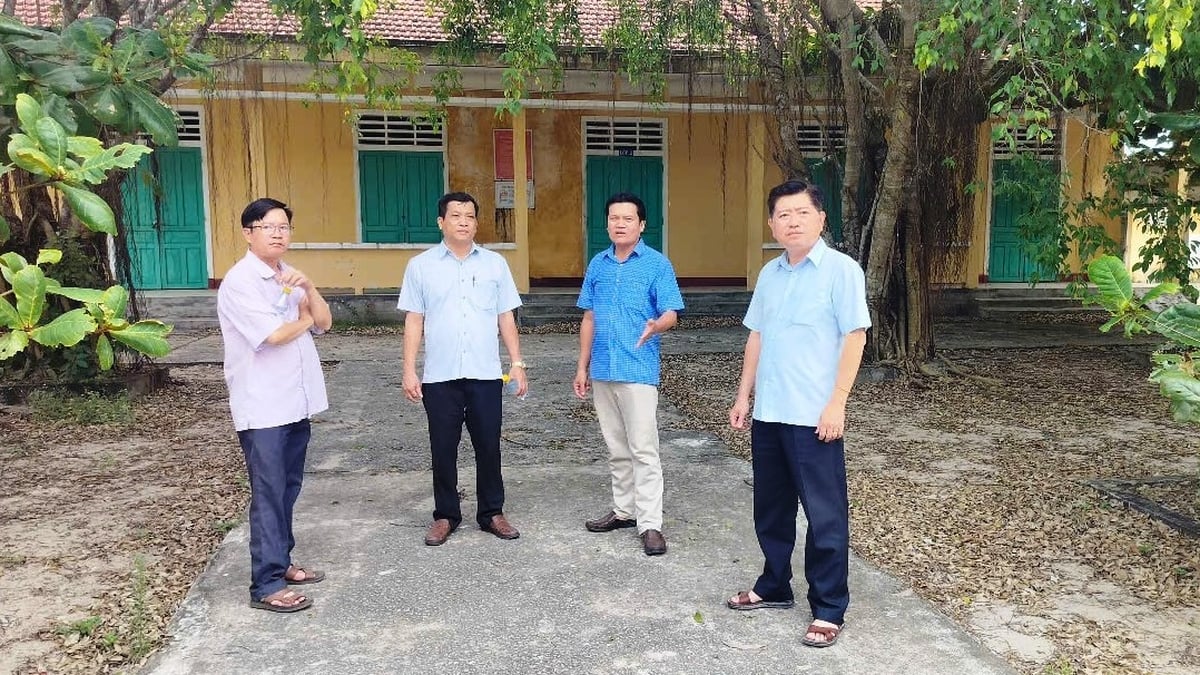










































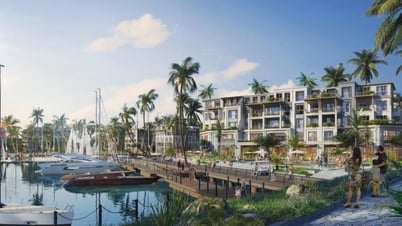











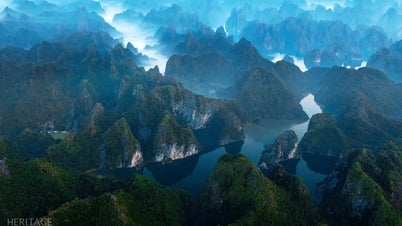


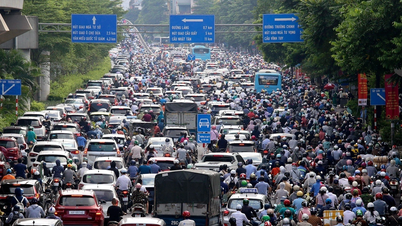


































Comment (0)